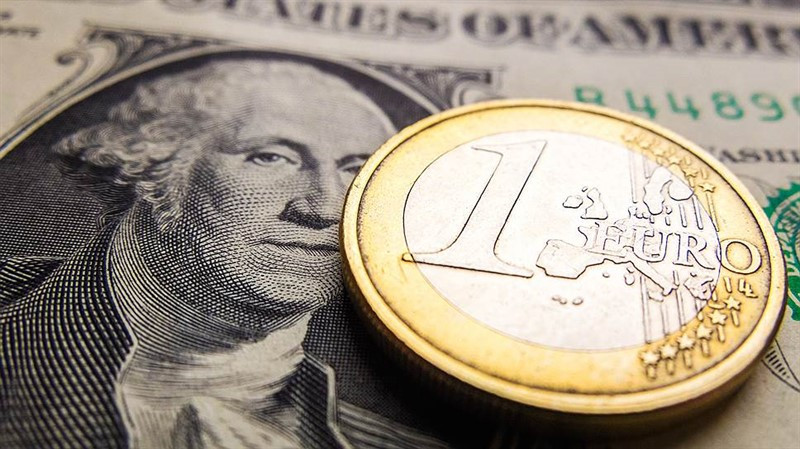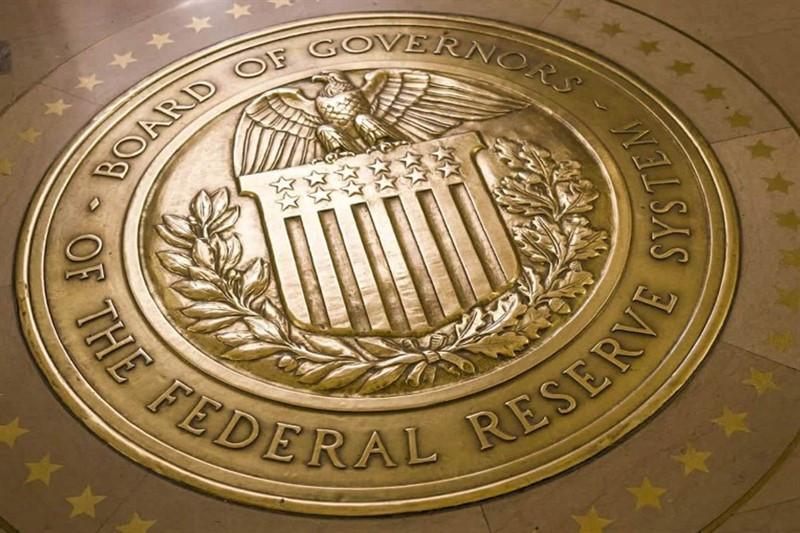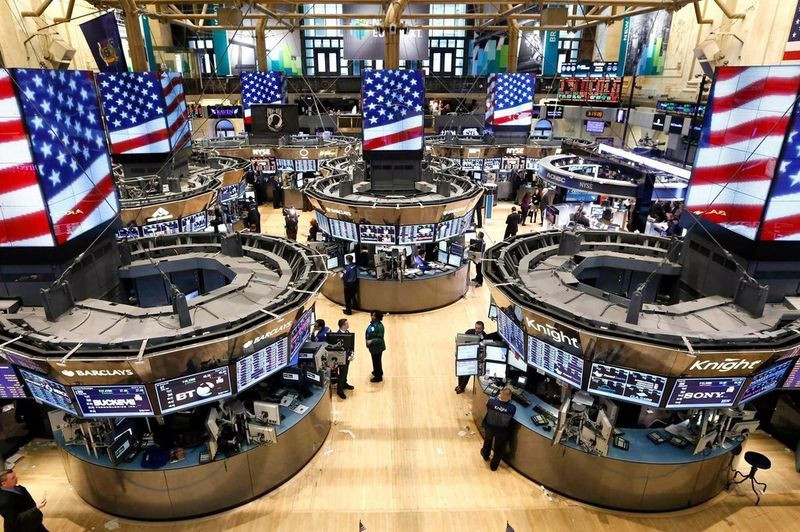The US currency ends the last month of spring in a depressed mood.
Many investors are now wondering whether the bullish trend in USD will continue?
In mid-May, the dollar soared to two-decade highs around 105.00 points, after which its rally reversed.
Over the past two five-day days, the greenback has lost almost all the points earned in the previous three weeks and for the first time this year is getting cheaper for the second consecutive week.
Against a basket of currencies, the greenback has already fallen by 3% compared to multi-year highs.
The dollar is close to showing the strongest weekly decline since January.
The rally of global stock indices undermined the demand for USD as a safe haven asset.
The S&P 500 is on track to break its longest losing streak in decades, during which the index sank more than 14% and found itself on the verge of a bear market.
With the approach of summer and the close end of the corporate reporting season, there are fewer negative factors that could cause market turmoil, experts say.
Fears that the US central bank may become more hawkish have led to market volatility in recent weeks.
"We've had 65% more daily price fluctuations of 1% or more than the average since World War II," CFRA Research strategists reported.
"If the Fed is too aggressive, it will suppress not only inflation, but also economic growth. It's like in winter you want to hit the brakes rather than hit them to maintain control and avoid unwinding," they added.
The minutes published on Wednesday from the May FOMC meeting somewhat calmed these concerns.
The document showed that the majority of the Federal Reserve's leaders support raising the base rate by 50 basis points at each of the next two meetings.
At the same time, they noted that an early rate hike would allow the central bank to pause later this year to assess the consequences of policy tightening for the country's economy.
"Although this is not our baseline scenario, we think that the Fed can prove that reaching 1.75%-2% ensures policy normalization, which then makes it possible to pause and assess the impact on jobs and inflation," JP Morgan analysts said.
Statistical data published on Thursday showed that the US economy is showing sufficient softness to cause a dovish turn by the Fed by the fall.
The US Department of Commerce reported that national GDP decreased by 1.5% in January-March in terms of annual rates, which turned out to be worse than the first estimate at -1.4%.
And now investors began to believe that the Fed, at least at the September meeting, will keep the rate.
Market assumptions about a pause in the US rate hike cycle in September, as well as the fact that pricing in the Fed policy tightening cycle has adjusted by 25-35 basis points since the beginning of May in a smaller direction, contributed to the weakening of the greenback's position.
And what is bad for a protective dollar is good for risky assets.
The key Wall Street indexes on Thursday closed with an increase in the range of 1.6-2.7%.
"The Fed's hints that it may pause later in the fall gave investors reason for optimism," CFRA Research analysts said.
This optimism was reinforced by earnings reports from a number of companies, such as Dollar Tree, Macy's and Williams-Sonoma.
The figures reinforced hopes that consumers have become more resilient to inflation and rising interest rates.
In addition, the negative impact of the fall in US GDP in the first quarter was partially offset by an increase in consumer spending by 3.1% against the first estimate of 2.7%.
A positive shift in risk sentiment in the US session on Thursday led to the fact that the dollar lost support and tried in vain to attract bulls as investors abandoned safe haven assets.
As a result, the USD index declined by more than 0.2% and finished around 101.80 points.
The EUR/USD pair took advantage of the selling pressure on the dollar and rose to 1.0730 after previously reaching a local low near 1.0665.
On Friday, interest in risk continued to dominate sentiment in financial markets.
The main US stock indexes were trading in the black, adding about 2% on average.
"On the eve of the holiday weekend, now is a good time to see the market in the green zone," said the specialists of Northern Trust Wealth Management. On Monday, the US stock exchanges will not work due to the national holiday – Memorial Day.
The US Department of Commerce today reported that the basic price index of personal consumption expenditures (a favorite indicator of inflation for the Fed) in April fell to 4.9% in annual terms from 5.2% recorded in March.
Signs of passing the peak of inflation play into the hands of stocks and increase pressure on the dollar, as the slowdown in price growth serves as an argument in favor of a less aggressive tightening of the Fed's policy.
On Friday, the dollar exchange rate against a basket of major currencies fell to the lowest levels since April 25 in the area of 101.40 points. Then the greenback managed to reduce losses somewhat. Nevertheless, it has fallen in price by almost 1.5% over the week, and this is the strongest such decline since January.
The main beneficiary of the weakening of the US currency is the euro, which recovered by 4% from the five-year lows recorded on May 13.
The EUR/USD pair made another attempt to rise above 1.0750 (50-day moving average) on Friday. Nevertheless, ING analysts believe that a drawdown below 1.0700 in the coming days looks more plausible than another rally.
"Since a significant part of the tightening of the European Central Bank's policy is already embedded in prices, the space for further growth of the euro on this factor seems limited. We expect the EUR/USD pair to return below the 1.0700 mark in the coming days," they said.
ING notes a higher probability of the dollar recovering from current levels than continuing to fall.
"It is difficult to expect that global investors' risk sentiment will improve significantly amid global monetary policy tightening and numerous downside risks (China, Russia/Ukraine), and the short-term advantage of the US dollar over other G10 currencies will decrease, since the Fed's position remains very hawkish." – the bank's analysts said.
"Given the more balanced positioning picture after the latest market movements, we believe that the risks of a greenback decline are now less pronounced, and instead we expect the USD to recover to the level of 103.00," they added.
The main US stock indexes were rising on Friday, extending a helping hand to the bulls on EUR/USD and preparing to show the first weekly growth in two months. The S&P 500 index has fallen for seven consecutive weeks for the first time since 2001.
Apparently, investors decided that it was time to buy shares after a sharp sell-off.
Strategists at Lombard Odier Investment Managers believe that this is only a temporary rally, although it may continue for some time.
Bridgewater points out that investors do not fully assess how long inflation will remain as high.
Most experts are confident that inflation will increase in the coming months against the backdrop of a rally in oil prices, an increase in fuel costs to record levels, continuing problems with supply chains, as well as higher wages in light of the still limited supply of labor in the national labor market.
Pershing Square Capital Management analysts believe that inflation can decrease only if the Fed raises the rate sharply or if the stock market collapses.
"Inflation will end when the Fed puts a line on inflation and says it will do 'whatever it takes,' and then immediately raises the rate to a neutral level and commits to continuing to raise the rate until the inflation 'genie' is back in the bottle," they said.
Given that another drop in financial markets may lead to the dollar becoming a safe haven again, few investors are ready to call the peak of the two-decade high marked earlier this month by the US currency.
High inflation not only stirs the minds of US central bankers, but also prevents their colleagues in Frankfurt am Main from sleeping peacefully.
Although a significant contribution to the rebound of the single currency from multi-year lows was made by the weakening of the dollar, it also significantly strengthened due to the fact that ECB President Christine Lagarde recently announced the end of the era of negative interest rates in the eurozone in the third quarter.
According to Lagarde, the ECB deposit rate, which currently stands at -0.5%, should start to rise in July and may be zero or slightly higher by the end of September before continuing to rise to a neutral rate.
Inflation in the eurozone probably rose to another record high of 7.6% in May.
This significantly exceeds the ECB's 2% target and forces the central bank to move on.
Currently, money markets are putting in quotes an increase in rates in the eurozone by 100 basis points by the end of this year.
However, the economic signals, which are likely to continue to deteriorate, indicate risks to the ECB's ambitious plan. In particular, in May, the composite purchasing managers' index in the eurozone fell to 54.9 points from 55.8 points recorded in April.
However, this does not prevent investors from believing that the ECB will act very aggressively and push the EUR/USD pair upwards.
"The EUR/USD pair is currently showing an expected recovery to a 38.2% correction of the fall from February, the 55-day average and mid-April lows at 1.0758-1.0787. We expect a much tougher barrier here, and the medium-term downtrend may reassert itself from here, and therefore we are now showing a bearish mood again," Credit Suisse strategists noted.
"There is another important resistance just above 1.0822-1.0839 which includes the broken upward trend since 2017 and should cap the upside. A move above 1.0822-1.0839 is not our base case, however it would trigger a deeper than expected recovery with the next resistance at 1.0923-1.0937. On the other hand, support lies at 1.0642, then in the 1.0608-1.0599 area, a break of which will confirm that risks are shifting to the downside again, and a retest of 1.0350-1.0341 is likely," they added .














